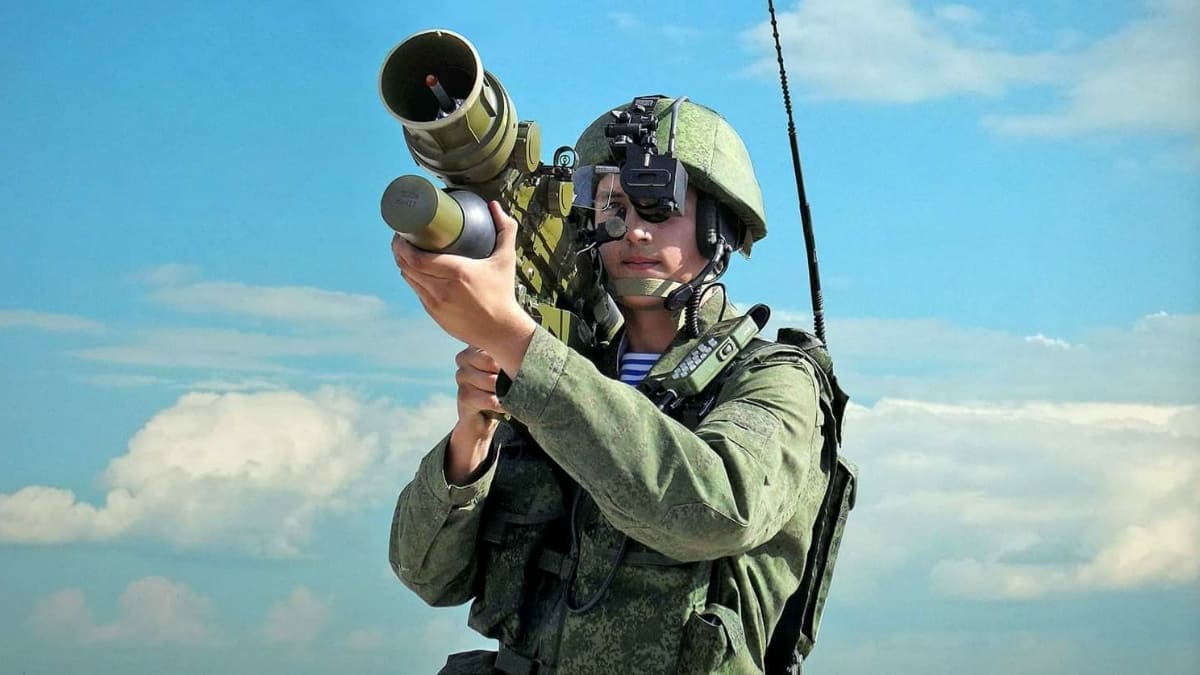A new batch of anti-aircraft systems from Russia could have been delivered to India at a time when Moscow’s capability to fulfill defense export orders has come under scrutiny. The delivery of the S-400 Triumf air defense system to New Delhi, for example, has fallen way behind schedule.
As per reports in Indian media that await official confirmation, the Indian Army has received the first batch of 24 Igla-S Man Portable Air Defence Systems (MANPADS) and 100 missiles developed in Russia.
This is part of a bigger agreement that would see the remainder of the systems produced in India. It is aimed at bolstering India’s Very Short Range Air Defence (VSHORAD) capabilities.
EurAsian Times could not independently verify these reports. Additionally, the Russian or the Indian Ministry of Defense (MoD) had not confirmed the delivery at the time of writing this report.
Russia signed a deal in November 2023 to supply India with Igla-S hand-held anti-aircraft missiles and to permit its production under license. At that time, Alexander Mikheyev, head of Rosoboronexport, said, “We have already signed the corresponding document, and now, together with an Indian private company, we are organizing the production of Igla-S MANPADS in India.”
The timing of this reported delivery is significant, as Russia has recently come under fire for its incapability to honor delivery schedules because of the Ukraine war. For instance, Russia informed India last month that it would be able to supply the remaining two squadrons of the S-400 long-range air defense missile system only by August 2026, two years behind the original schedule.
India and Russia inked a deal worth over Rs 35,000 crore ($5B) to supply five squadrons of S-400 air defense missiles. The delivery was earlier anticipated to be completed by 2023-24. However, Russia has had to alter its plans to meet the demand of its forces in Ukraine.
The Russian air defense system, projected as among the finest in the world, can be effective against fighter jets and cruise missiles, and it can hit targets at 400 kilometers per hour.
According to Russia, the missile can destroy and detect targets flying as low as 100 feet and as high as 40,000 feet. The entire system can be readied to fire within a few minutes. The missiles and launchers are mounted on cross-country trucks. The IAF has already operationalized three of its S-400 air defense missile squadrons along borders with China and Pakistan.
Several military critics have said that the delay in delivery of the missiles is a major failure of the Russians and have even condemned India for trusting an ‘unreliable ally.’ Some analysts have suggested that the delay in deliveries does not augur well for India’s security with tension brewing at the border with China.
However, by delivering the Igla-S hand-held anti-aircraft missiles, Moscow may be trying to salvage its reputation. Russia first expressed its optimism in signing a contract for Igla-S with India during the Aero India 2023 exhibition, as previously reported by EurAsian Times.
The Indian Army acquired the Igla-S systems from Russia under the emergency procurement route in 2020. They were finally inducted by the service in April 2022. “The contract was signed in December 2020, and the equipment was delivered by December 2021. This included 24 launchers, 216 missiles, and testing equipment,” one of the sources told the media at the time of induction.
If confirmed, the latest delivery would be the biggest and most significant. MANPADs, for one, have gained enormous popularity after Ukraine effectively employed them to deny Russia air superiority in the initial weeks of the invasion.
Ukraine’s MANPADS have shot down numerous Russian fighters, helicopters, and drones in more than two years of conflict.
Interestingly, the Ukrainian military has used the Igla-S against Russia with an impressive strike rate, in addition to the NLAWs (Next Generation Light Anti-tank Weapons) and Javelins (the Advanced Anti-Tank Weapon System-Medium—AAWS-M) supplied by NATO. It is anticipated that the induction of the system would provide India with a similar capability and combat edge over its adversaries.
Igla-S for India
The Igla-S is a man-portable air defense system (MANPADS) that essentially forms the final line of defense against flying objects in a multi-layered air defense system. It is specifically designed to attack low-flying aircraft.

The Igla-S can recognize air targets like Unmanned Aerial Vehicles (UAVs) and cruise missiles and can take off and land at any time of day, even in the presence of decoy flares, also referred to as jammers and background clutter. It can engage any kind of observable aircraft or helicopter.
When it comes to firing cruise missiles and detecting targets, the Igla-S is a more combat-effective version of the Igla MANPADS. The missile incorporates an innovative logic-unit-equipped two-channel optical seeker. The Very Short Range Air Defense System, or VSHORAD (the Igla-S), will replace the existing Igla in service and be all-weather capable.
As per the specifications, it will have a maximum altitude of three kilometers and a maximum range of six kilometers. The Igla-S’s lethality is further enhanced by its bigger warhead, proximity fuse based on a laser, algorithm-based optimal moment of explosion, and exceptional precision. The warhead also features an increasing number of fragments and explosive charges.
The system consists of combat equipment such as the 9M342 missile and the 9P522 launching mechanism, as well as night firing devices and training facilities. It also includes maintenance tools, including the 9F719-2 test kit and the 9V866-2 mobile test station.
The Igla-S missiles provide 24/7 air defense for military installations and civilian assets against strikes by tactical aircraft, fighters, assault aircraft, and fighter bombers.
With the cutting-edge features, India’s air defense capability could be greatly enhanced by the Igla-S, given the dangers that China and Pakistan pose on its borders.
- Contact the author at sakshi.tiwari9555 (at) gmail.com
- Follow EurAsian Times on Google News




